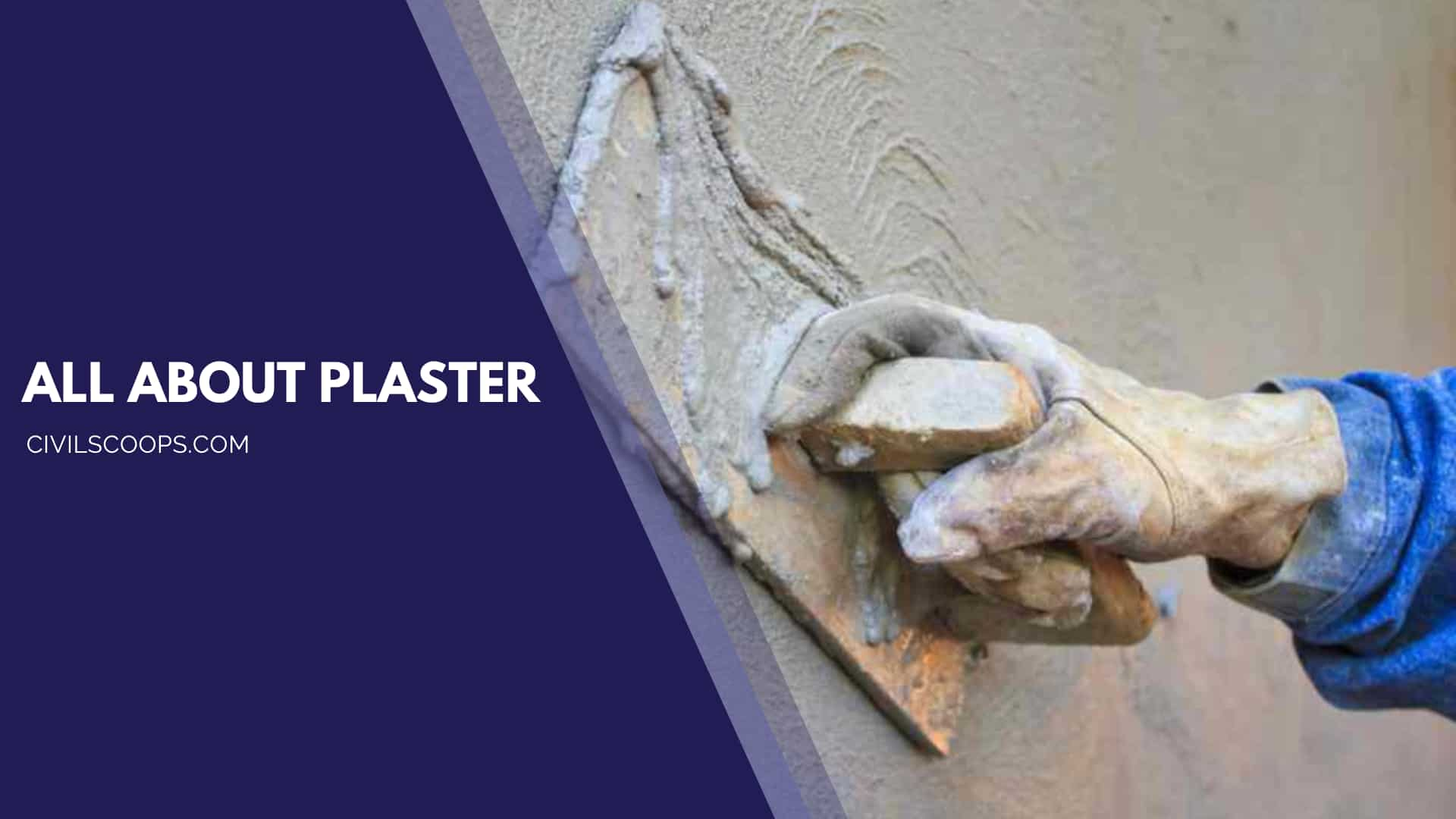All About Plaster | What Is Plaster | Requirement of Good Plaster | Types of Plasters
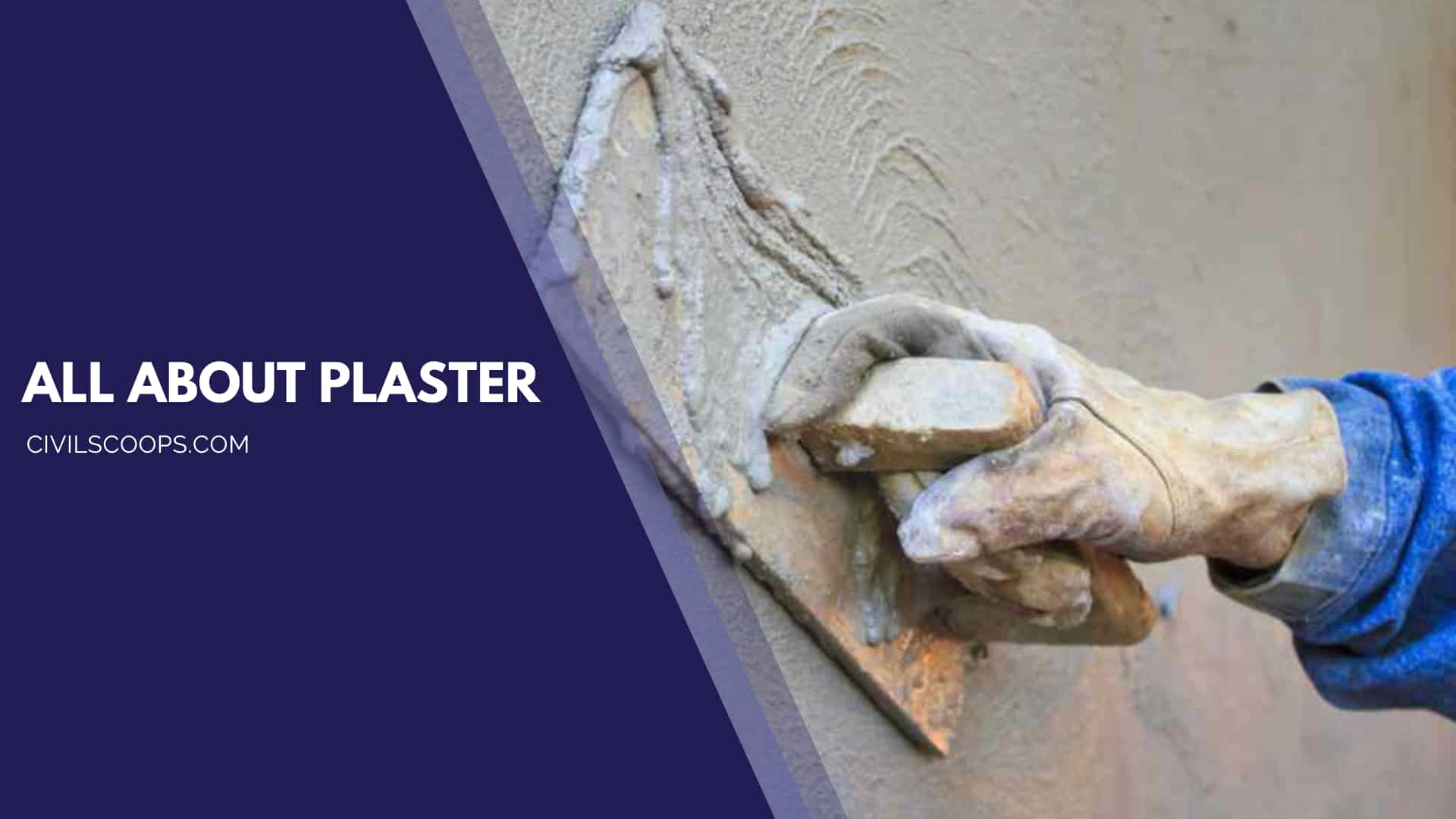
Table of Contents
What Is Plaster?

This is the process of covering rough walls, uneven surfaces in the construction house, and other structures with a plastic material, called plaster or mortar.
Sometimes, the term ‘rendering’ is used instead of plastering when the plaster or cement is applied to the external surface of the wall either to improve the appearance or to protect them from weather agencies, such as rain heat, etc.
Requirement of Good Plaster

To turn out to be a good plaster, the plastering material must possess to satisfy the following requirement
- It should adhere to the background and should remain adhered to during all variations of climate changes. Also, it should be possible to apply it during all weather conditions.
- It should not contract in volume while drying and setting. Otherwise, it will crack and give an unsightly appearance.
- It should be cheap and economical.
- It should be hard and durable, providing a smooth, non-absorbent, and washable surface with the required decorative effect and durability.
- It should offer good insulation against sound and high resistance against fire.
- It should effectively check the entry or penetration of moisture from the surface.
- It should possess good workability.
Types of Plasters
- Browning plaster.
- Bonding plaster.
- Thistle plaster.
- Carlite plaster.
- Hardwall plaster.
- Dri-coat plaster.
- One Coat plaster.
- Tough coat plaster.
Browning Plaster.
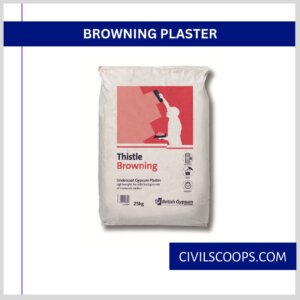
British Gypsum Thistle Browning Plaster undercoat plaster is used to provide a smooth, high-quality, flat surface to internal walls and ceilings and a durable base for the application of decorative finishes.
Bonding Plaster
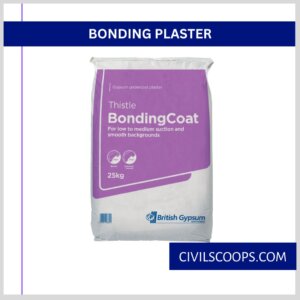
Similar to browning plaster, bonding plaster is also considered an undercoat on which other things are added. As mentioned earlier, it is an undercoat plaster, which means it is the first coat to be applied to a newly patched wall.
Thistle Plaster
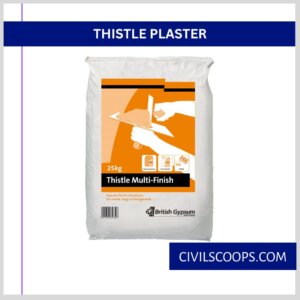
Thistle plaster products are designed to suit either hand or machine applications.
Their consistent performance, workability, and reliability are assured thanks to our exacting manufacturing standards, which enable plasterers to maximize productivity and cut product wastage on site.
Backed up by a range of compatible, high-quality accessories, Thistle plasters produce a high-quality surface that’s tough and durable.
Thistle plasters meet all customer demands for an aesthetic, low-maintenance internal surface finish for a range of standard and specialist applications.
Carlite Plaster
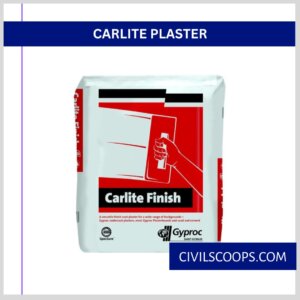
Carlite plasters provide a smooth high-quality surface to internal walls and ceilings. They also provide a durable base for the application of decorative finishes.
The range includes two-coat plastering (using basecoat & finish coat plaster), finish plastering over plasterboards, and special application plasters.
The plasters can be used in both new buildings and refurbishment and can be applied to all common background types.
Specialist applications include:
- X-ray protection
- Projection plastering
- Airtightness
- Salt retarding plastering
Carlite plasters are pre-mixed and only require the addition of clean water. They have a controlled setting time and are free from inherent shrinkage cracking. All plasters are predominantly supplied in 25kg bags for ease of handling and storage.
Limitations
- Carlite plasters should not be used to isolate dampness.
- Not suitable for use in continuously damp or humid conditions.
Hardwall Plaster

Hardwall Plaster is usually applied over cement render or concrete to provide a smooth finish for painting or decoration. It is easy to trowel making initial application and finishing easier. When used with hydrated lime (lime putty), a high gloss finish is produced.
Typical Applications of Hardwall Plaster
- Hardwall Plaster is typically used in both residential and commercial construction as a finishing coat over cement render or concrete in preparation for painting.
- When used with hydrated lime (lime putty), a high gloss finish is produced which can be waxed to create a decorative finish.
- In hot or dry conditions it may be necessary to wet the surface before application to prevent the plaster from drying out before setting.
Dri Coat Plaster

- Thistle DriCoat is the only plaster recommended for re-plastering walls following damp-proof course treatment.
- Heavy salt contamination in the background can cause persistent damp problems.
- Conforms to EN 998-1.
- This product is certified to BES 6001 achieving a rating of ‘Excellent’
- Available in 25kg bags.
One Coat Plaster
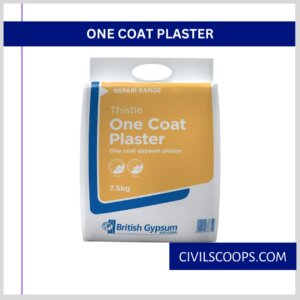
- Plastering provides your walls and ceiling with a smooth, durable coating.
- One-coat plaster is a particular kind of plaster created to offer a simpler approach to plastering.
- It allows for application with fewer steps since this plaster acts as a base and finishing coat in one.
Also Read: Grey Water vs Black Water | What Is Grey Water | What Is Black Water
Tough Coat Plaster
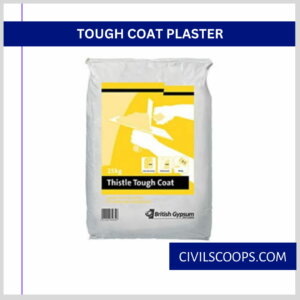
- Thistle Tough Coat is a gypsum undercoat plaster for use on most masonry.
- With a final coat of Thistle Multi-Finish, it provides a smooth, inert, high-quality surface to internal walls.
- It is suitable for application by hand or by a plaster projection machine.
[su_box title=”FAQ” style=”default” box_color=”#333333″ title_color=”#FFFFFF” radius=”3″ class=”” id=””]
Gypsum Plaster
Gypsum Plaster is a multi-purpose conventional basecoat plaster. It is a “neat” gypsum basecoat that requires the addition of an aggregate (sand, vermiculite or perlite) and water. It can be used to create durable, sound- and fire-resistant interior walls and ceilings.
Gypsum Lath
Gypsum lath (rock lath) consists of gypsum plaster sandwiched between two sheets of absorbent paper. The finish side (to which plaster is trawled) is treated with gypsum crystals for the plaster to chemically bond to and is sometimes perforated to allow mechanical bonding.
What Is Plaster Used for?
plaster, a pasty composition (as of lime or gypsum, water, and sand) that hardens on drying and is used for coating walls, ceilings, and partitions. Plastering is one of the most ancient building techniques.
What Is Plaster of Paris Used for?
It is commonly used to precast and hold parts of ornamental plasterwork placed on ceilings and cornices. It is also used in medicine to make plaster casts to immobilize broken bones while they heal, though many modern orthopedic casts are made of fibreglass or thermoplastics.
What Is Plasterboard Used for?
When to use plasterboard? The primary use of plasterboard is to build partitions wall linings or ceilings in any building, ranging from hospitals and schools to shops and domestic properties. Newer, more innovative plasterboards can also be used for external sheathing purposes.
What Is Bonding Plaster Used for?
Use for walls and ceilings with a smooth finish, or as a base coat on surfaces.
Gypsum and Plaster of Paris
Plaster of Paris is de-hydrated gypsum. Gypsum is a naturally forming non-metallic mineral, found as a rock or sand composed of 70.1% calcium sulphate and 20.9% water by weight. Its chemical formula is CaSO4 · 2H 2O.
Difference Between Gypsum and Plaster of Paris
Gypsum is a naturally occurring soft-sulfate mineral deposited from lake and sea water and found in layers of sedimentary rocks. On the other hand, Plaster of Paris is produced by heating gypsum or calcium sulphate to a very high temperature of 120 degree celsius for an hour.
What Is Plaster in Construction?
Plaster is a building material that is used to coat walls and ceilings with a protective or ornamental coating, as well as for molding and casting decorative features.
What Is Plaster of Paris Made of?
Plaster of Paris is a mixture of powdered calcium sulphate (commonly known as gypsum) and water that hardens quickly. It has been used in a wide variety of decorative applications (e.g. moulds, statuary, casts, etc.)
What Is Wall Plaster Made of?
At its most basic, plaster is a mixture of lime or gypsum, sand or cement, and water that hardens when dry.
What Is Old Plaster Made of?
Historical Background. Plasterers in North America have relied on two materials to create their handiwork–lime and gypsum. Until the end of the 19th century, plasterers used lime plaster. Lime plaster was made from four ingredients: lime, aggregate, fiber, and water.
What Is Gypsum Plaster Made of?
gypsum plaster, white cementing material made by partial or complete dehydration of the mineral gypsum, commonly with special retarders or hardeners added. Applied in a plastic state (with water), it sets and hardens by chemical recombination of the gypsum with water.
What Is the Difference Between Drywall and Plaster?
Drywall is made out of softer material called gypsum which doesn’t crack. Sheets of it are nailed into the wooden studs when finishing the interior of a house. Plaster, on the other hand, dries much harder than drywall, and is more labor-intensive and expensive.
What Is the Difference Between Plaster and Joint Compound?
The plaster of Paris is made from calcium sulfate dehydrate (calcium sulfate hemihydrate), while the joint compound is made from a combination of Portland cement, limestone, and gypsum. Joint compound is also available in powder or premixed form, and it comes in a variety of colors to use on walls.
What Is the Difference Between Gyprock and Plasterboard?
Gyprock is also known as gypsum board, drywall, or plasterboard. For thousands of years, plaster made from lime, sand, animal hair and other ingredients was used to create a smooth interior finish on building walls and ceilings.
Cement Plaster Is Used for
Cement plaster is used to plaster the interior as well as the exterior walls of the house. The best quality of cement plastering is needed in order to do a great job. Cement plaster is a mixture of water, fine aggregates and Portland cement.
Is Plaster Better Than Drywall?
For one thing, plaster is by nature a more durable finish than drywall, even high-level drywall finishes. In addition, plaster outperforms drywall in a number of key areas, including insulation, soundproofing, and fireproofing. One additional point in plaster’s favor is that by nature, mold can’t grow in plaster.
How Long Does Plaster Last?
What is the shelf life of plaster? Plaster can be stored 3-6 months if it is stored in a cool, dry place, protected from extreme heat and cold, direct sunlight and at a temperature above 45°F (7°C).
How Long Does Pool Plaster Last?
When it comes to durability, both plaster and pool paint are built to hold up against the chemicals in your pool and natural conditions outside of it such as harmful UV rays; however, most pool plaster lasts 15-20 years, while epoxy pool paint – the longest-lasting type of pool paint on the market – needs to be …
How Long Does Diamond Brite Last?
Colored quartz is added as it can come in colors such as emerald, blue-gray, aqua blue, and many others. Diamond Brite finishes can last about 8 years- 15 years. A Diamond Brite finish is strong and durable.
How Long Does Quartz Pool Finish Last?
Natural and colored quartz is ten times harder than marble. A quartz pool finish will typically last between 7 and I 2 years.
How Long Does Pool Marcite Last?
Marcite is also the most affordable option for a new pool or replastering an existing one. With properly maintained pool water, it will last 8 to 12 years.
Is Plaster Water Resistant?
Plaster of Paris is an extremely porous material when dried, and as such, will absorb any new water that touches its surface. In order to waterproof plaster of Paris for outdoor use or for temporary exposure to water, you must fill in as many surface pores as possible.
Can You Paint Plaster Walls?
Plaster can be easily painted with the same techniques as drywall. Even with a good coat of primer, plaster walls are notoriously thirsty for paint. Using a roller for open spaces and brushes around trim and borders, spread an even coat of your choice of paint. Don’t try to completely cover the wall in one go.
Can You Paint Plasterboard?
There are generally three accepted ways to apply paint to plasterboard walls, by brush, roller and spray. For a professional and timely finish, we recommend keeping the brush application to cutting in the edges.
Can You Plaster Over Paint?
If the paint is good quality and not in need of any maintenance, skimming over it with plaster is perfectly fine! When plastering over a painted wall that is in good condition, the first step you must take is to clean the surface thoroughly.
Can You Paint Straight onto Plaster?
Can you paint directly on new plaster? You have to prime new plaster before painting it. Freshly plastered walls are very dry and such the moisture out of your paint. Priming the walls with a mist coat first will ensure you end up with a great paint finish that doesn’t flake or peel off.
Can I Paint Straight onto New Plaster?
Ideally, plaster needs to be fully dry prior to painting. Fresh plaster will take around 4-6 weeks to fully dry. Fresh plaster is porous and will therefore absorb moisture. If you attempt to paint over plaster that is still damp the paint is likely to peel off.
How Do I Know If I Have Plaster Walls?
A pushpin test is what some experts do to find out what wall they’re working with quickly. Take a pushpin and press it on the wall using your thumb. If the pin pokes into the wall easily, that’s drywall. If it doesn’t, then that’s plaster.
Can You Put Plaster Over Paint?
Plastering on existing painted walls is only possible if the paint is in very good condition. In terms of adhesion and cleanliness, and with the application of Thistle Bond-it prior to plastering. We suggest carrying out this procedure on a trial area to determine the suitability (adhesion).
How Thick Is a Plaster Wall?
A traditional 3-coat plaster is typically 7/8″ thick and when you add in the 1/4″ wood lath that supports the plaster wall, you have a wall that is more than 1″ thick! Compared to today’s most common drywall thickness of only 1/2″, that is a difference worth noting.
Methods of Plastering
- Application of Rendering Coat.
- Application of Floating Coat.
- Application of Finishing Coat.
Plastering Work
Plastering work is a thin layer of mortar, applied over the masonry and it acts as a damp-proof coat over the brick masonry work. Plastering work also provides a finished surface over the masonry that is firm and smooth hence it enhances the appearance of the building.
Types of Plasters
There are three primary types of plaster used for first aid: washproof, fabric, and blue plasters. Among the most common are washproof plasters which are typically pink in colour. As the name suggests, washproof plasters offer the benefit of being able to cope with moisture and wet conditions.
Types of Plasterboard
- Standard Plasterboard. This is the most common variety of plasterboard.
- Insulated Plasterboard.
- Damp-Proof Variants.
- Flexible Sheets.
- Moisture-Resistant Plasterboard.
- Fire-Resistant Plasterboard.
- Acoustic Plasterboard.
- Impact Plasterboard.
Types of Plaster Finishes
- Smooth cast finish.
- Rough cast finish.
- Sand faced finish.
- Pebble dash finish.
- Scrapped finish.
- Depeter finish.
- Textured finish.
Plastering in Construction
Plastering is the process of covering rough walls and uneven surfaces in the construction of houses and other structures with a plastic material, called plaster, which is a mixture of lime or cement concrete and sand along with the required quantity of water.
What Type of Plaster Is Used for Walls?
The most common form of plaster for interior walls is gypsum plaster. Plaster walls are generally created through a three-coat process. To begin, lath must be secured to the framing. Historically, lath has been made of wood strips, but more recently metal or plasterboard have come into use.
[/su_box]
[su_note note_color=”#F2F2F2 ” text_color=”#333333″ radius=”3″ class=”” id=””]
Like this post? Share it with your friends!
Suggested Read –
- What Is Diversion of Headworks (Rivers) | Types of Diversion Headworks
- Difference Between Pier and Abutment | What Is Pier | What Is Abutment
- What Is Flyover | Types of Flyover | Flyover Design | Flyover Construction
- Pile Cap Design | Pile Cap Construction | Piles Structure | Pile Cap Foundations | Square Piling Caps | Pile Cap Reinforcement
- Structural Audit Definition | Structural Audit of Residential Building | Why Structural Audit | Need of Structural Audit | When to do Structural Audit
[/su_note]
Originally posted 2022-11-02 10:06:00.

